Context
Our team had previously developed a bot for Capital One's Slack channels, specifically assisting channels dedicated for tech support for tools and products. Pigeon's main goal is to efficiently help people working there to find the people and answers they are looking for. It’s also a way for teams and Slack channel admins to get insights into topics and moods of their audience.
Slack users often resort to the use of emojis, sometimes unique and custom ones. Pigeon did not understand these emojis yet. The custom emoji database at Capital One is quite large, making it impossible to accurately classify or understand all for any single person.
In response to the need of identifying meaning of emojis as part of developing sentiment analysis models for Pigeon, we decided to ask everyone to participate in a "survey".
Emoji Sort is a lighthearted desktop game asking employees to tell us their gut feeling about the standard and custom emojis used in the database. The data generated by this game feeds into the sentiment analysis models of the internally developed Slack bot–Pigeon, making it smarter at understanding emoji-based responses accumulated in Slack channels it lives in. Team Composition
Design Lead, Data Visualization Designer, Brand and UI Designer, Front-end Developer, 2 Engineers
Role and Responsibilities
Brand and UX/UI Design, Design Strategy
The Game
Employees sign in using their EID numbers and passwords. This makes sure their progress can be saved and the number of responses submitted by each player can be tracked and limited to one.
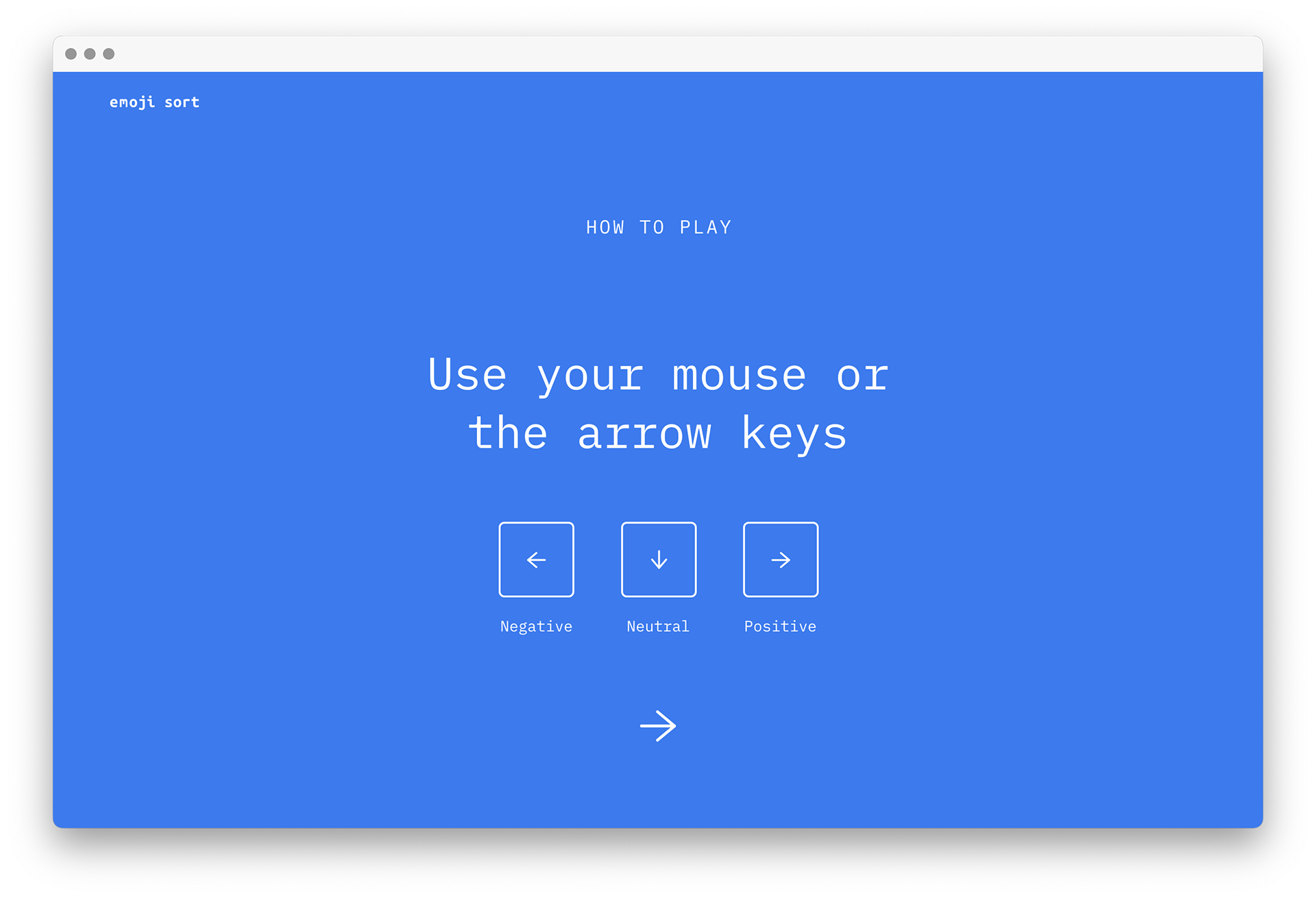
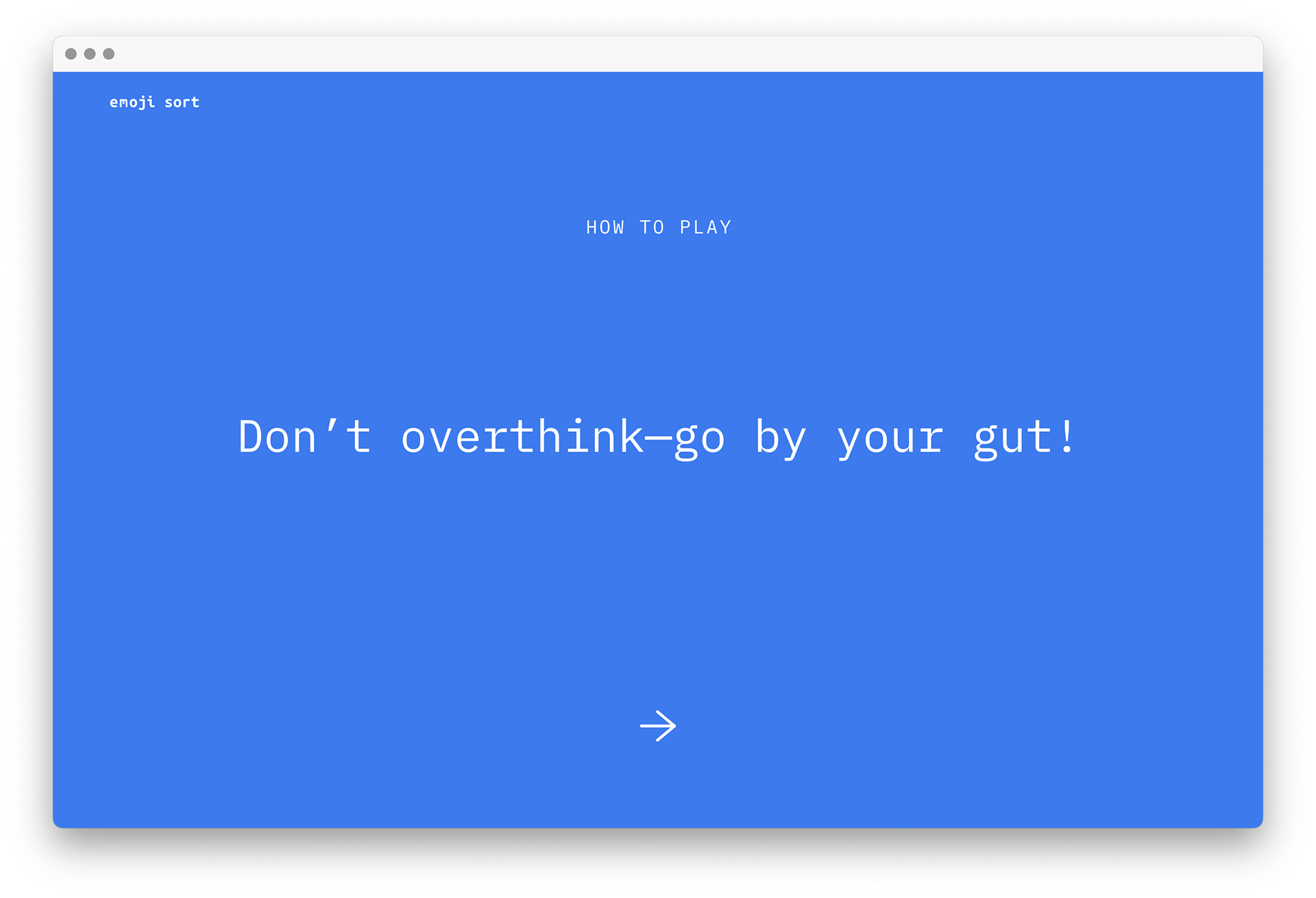
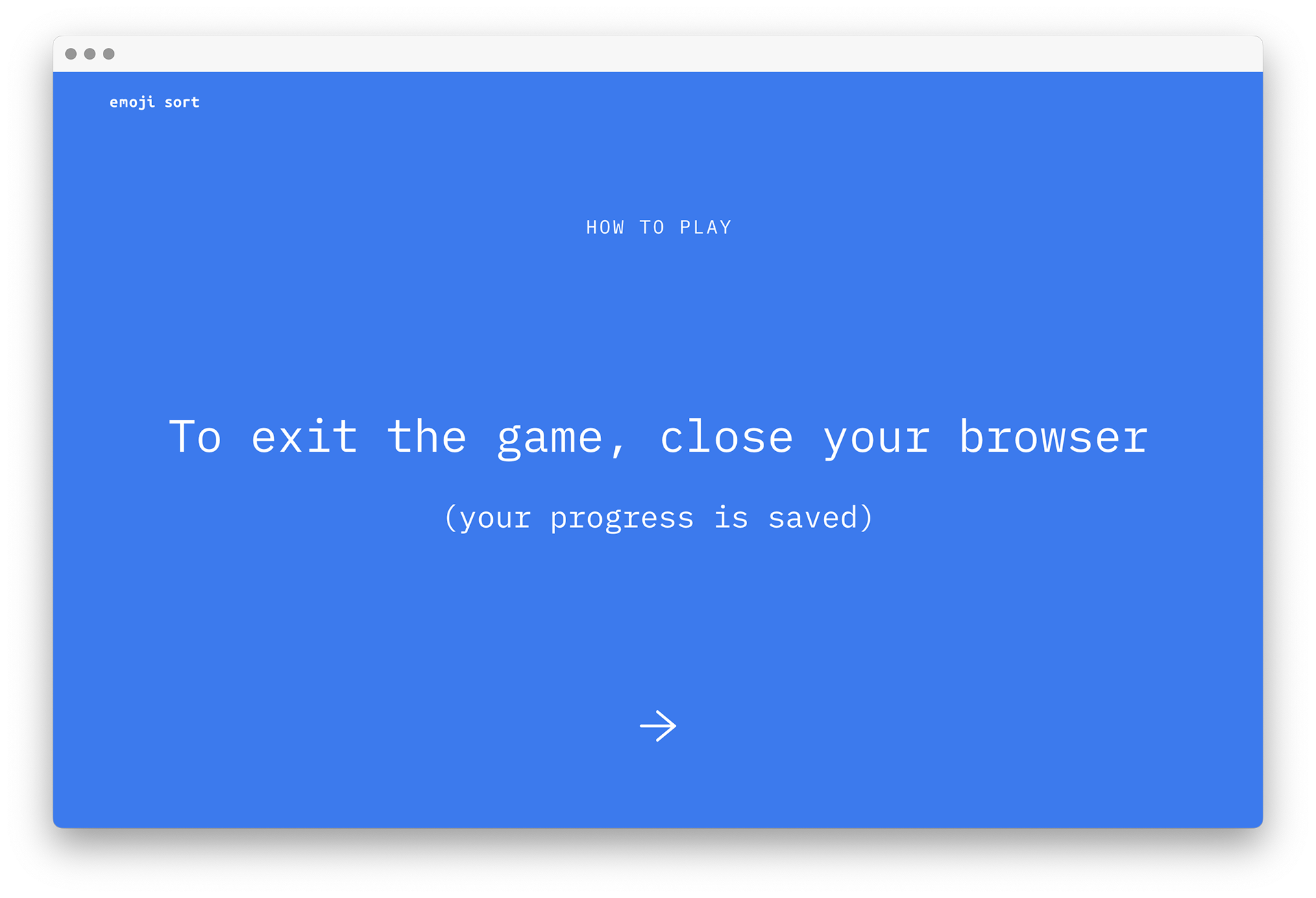
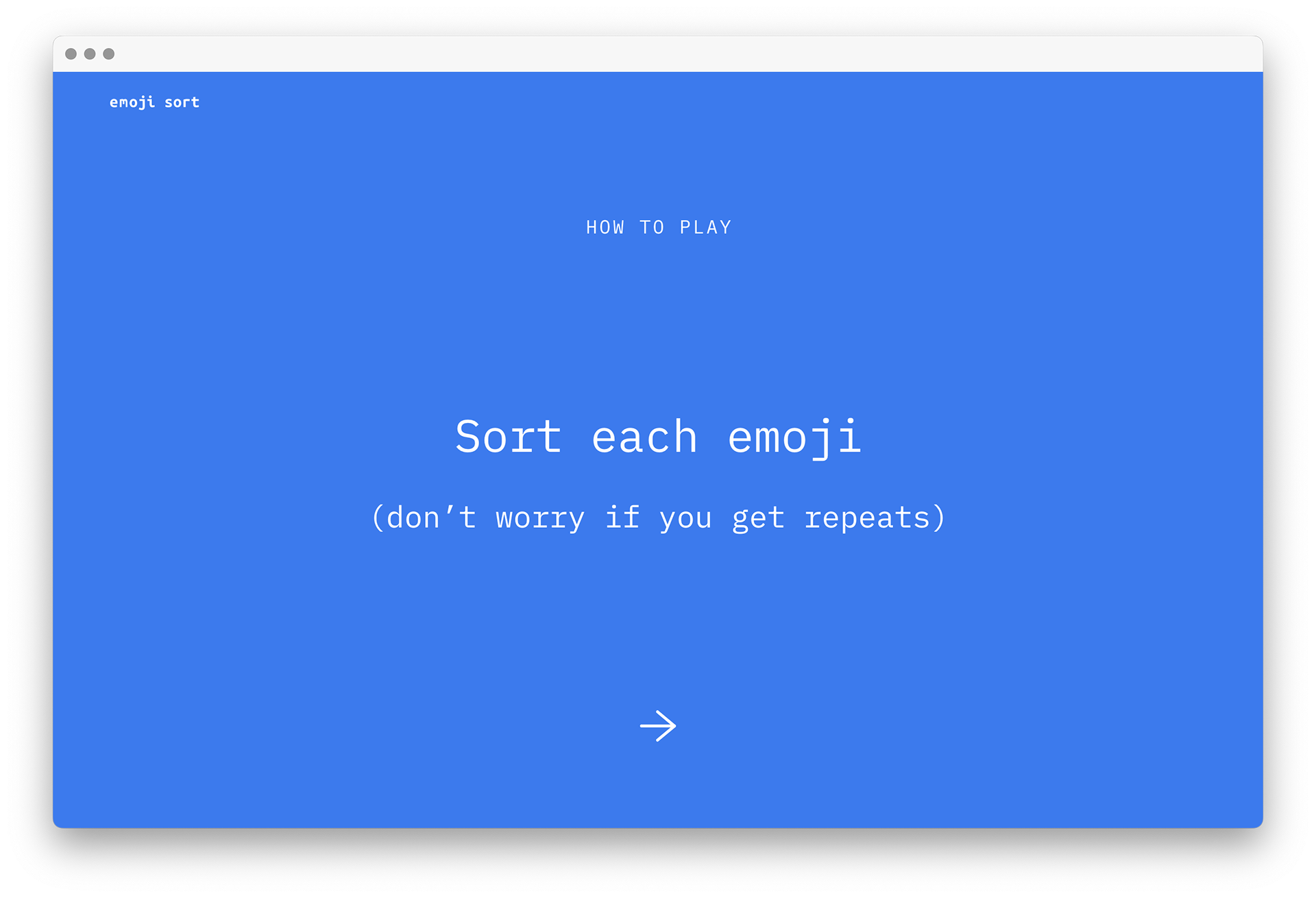
The game begins after a brief set of instructions.
Emojis take the center stage on the main game screen, with a progress bar at the bottom to help set time expectations, and a slow-moving background animation to keep things lively without distracting away from the task at hand.
Once a small percentage of emojis are sorted, players can review their sorts and how their responses compare to those of other players', at any point during the game.
There is also an option to investigate crowd sentiment and interpretation more granularly.
Returning to the game after a pause, players are greeted with a crowd sentiment fun fact.
Finally, once a player is done sorting all emojis in the database, the game ends with a celebratory animation featuring Pigeon the Slack bot, and leads to a "Mood Review", an interactive results and stats page, where the player's bird type is revealed.
Mood Review: The Interactive Report Card
Bird Archetypes
The bird types were designed into the game to serve as the reward component that encourages complete sorting, which should take no more than 5 to 10 minutes.
At the end of Emoji Sort, players meet their bird type. Each player is assigned a bird based on how their responses compare to the larger group and the time they took to sort emojis.
Building on the original Pigeon character (also designed by me), these characters were created referencing the 12 Jungian archetypes, and are based on a matrix with one axis representing the nature of the player’s answers–divisive vs agreeable relative to the larger pool of players; and the other axis representing their response time.
Pigeon's Profile Picture on Slack
Bird Matrix
The unique personalities of the four bird types were reflected in their character illustrations, each of them lightly animated for an additional moment of joy.
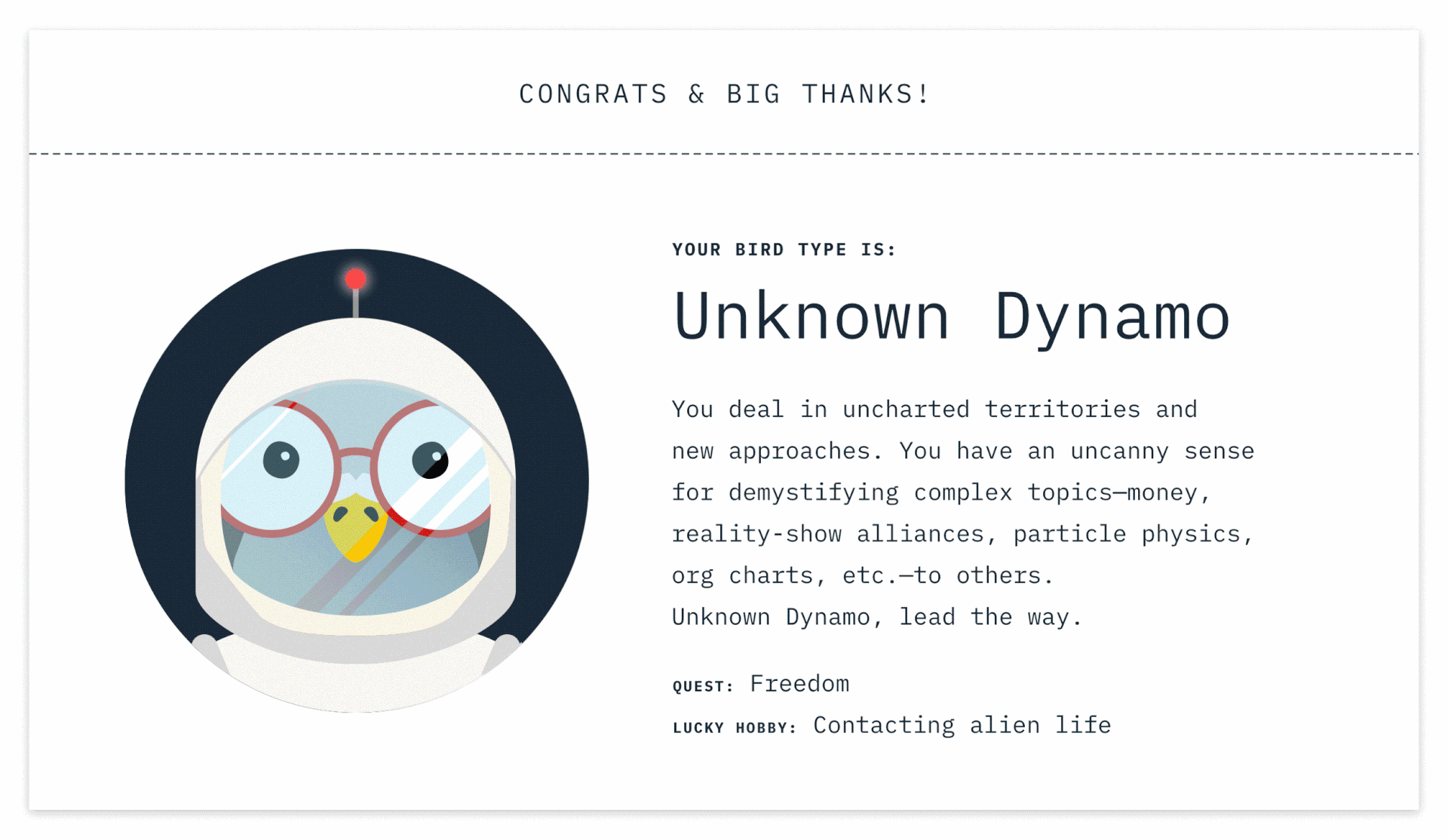
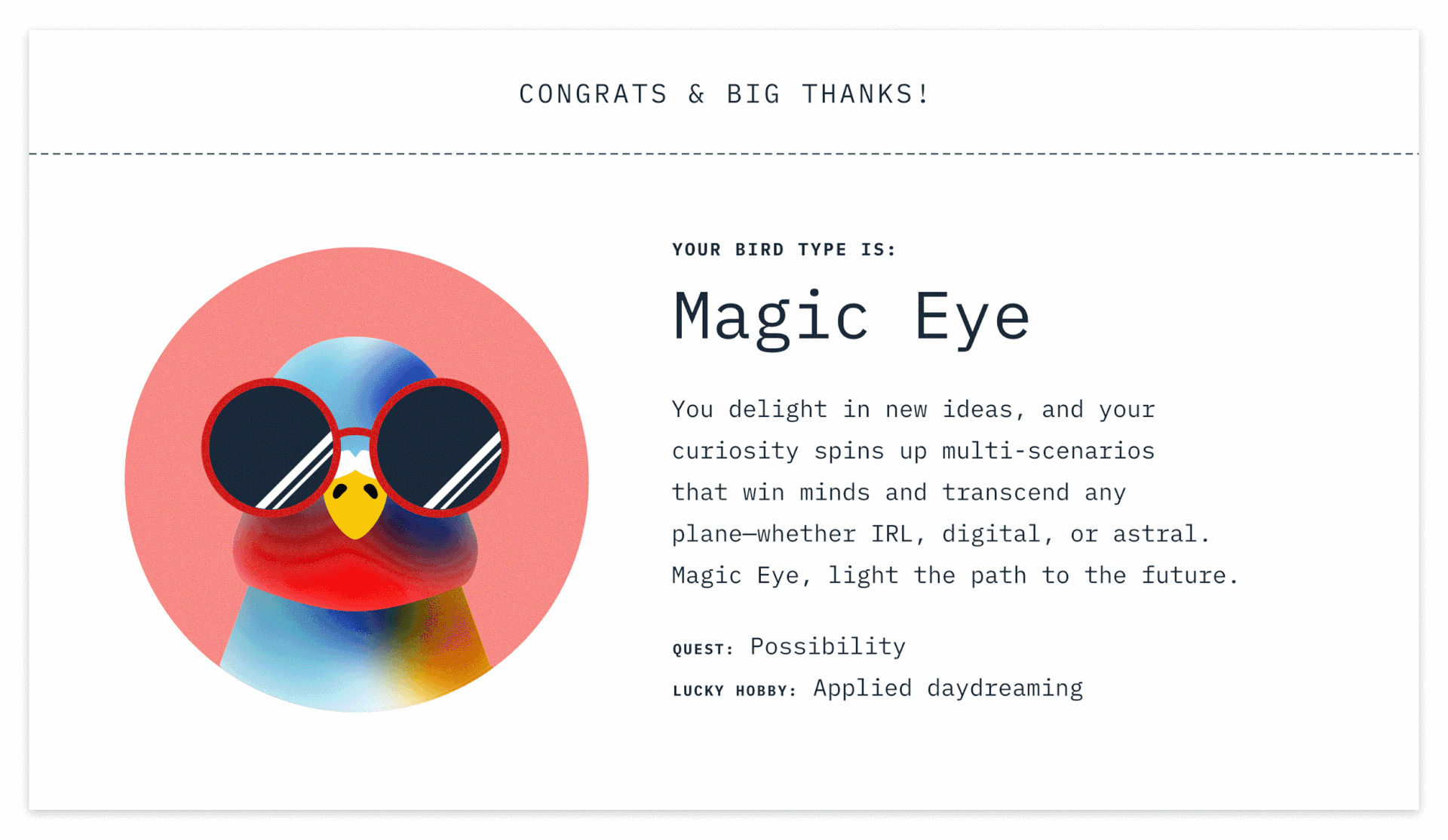

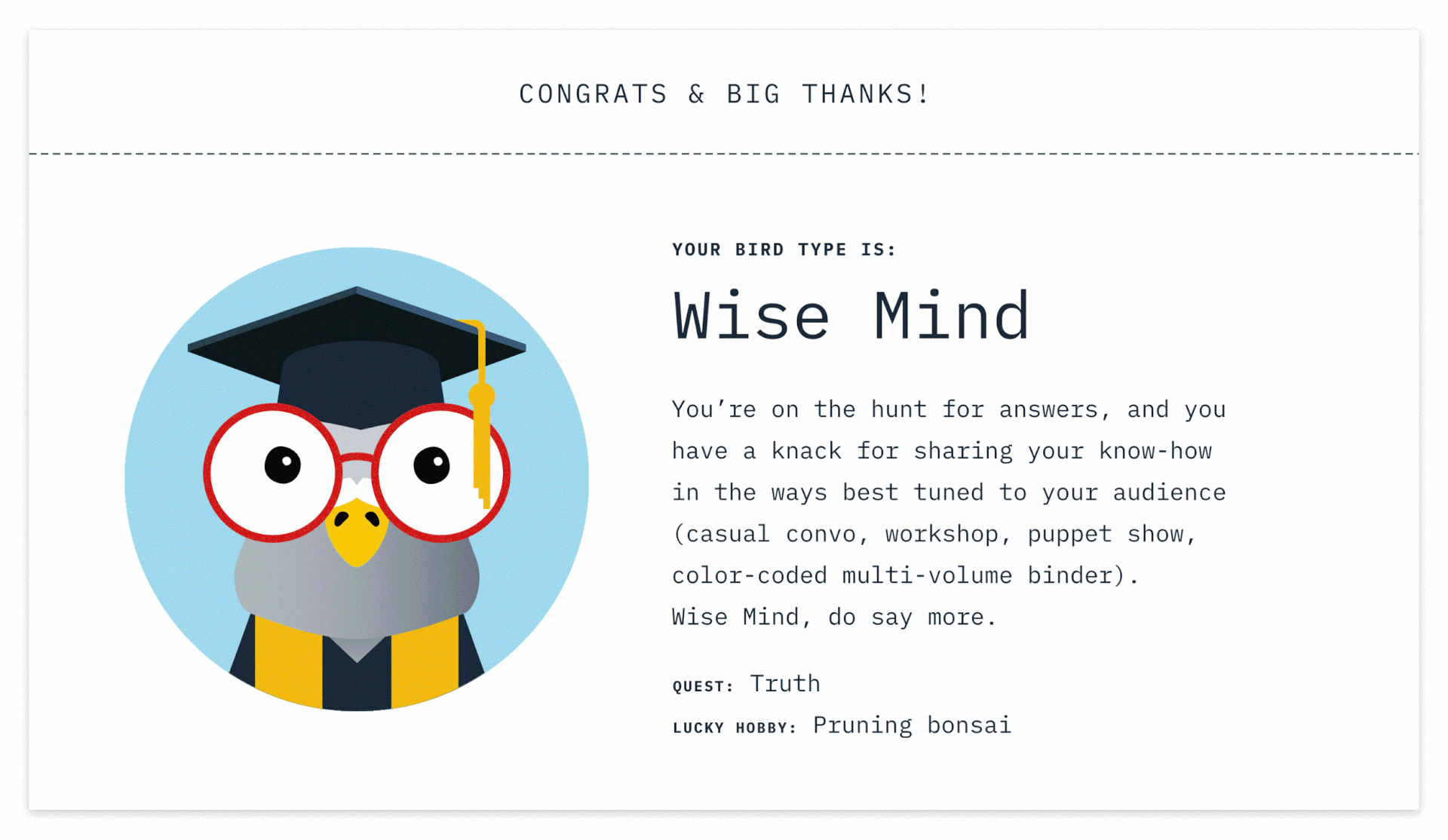
Marketing for Emoji Sort was necessary in order to generate meaningful enough data. Many of our coworkers adorn their laptops with custom stickers, once could say there is sticker culture at Capital One. In addition to the announcements on online channels, as a way to draw players in, we distributed some sticker sheets at our offices across the country.
In-office Marketing Stickers
Challenges and Outcomes
The entire list of emoji we had on Slack was very large. Anyone and everyone had the ability to create and add an emoji to be used on Slack internally. There was no oversight. Some emoji were duplicates, others potentially not aligned with the company's inclusive values. We audited the entire set, and removed a portion of the emojis from the set to be used in Emoji Sort.
This project in its entirety was side-of-desk and self initiated, which meant that everyone involved had to be enticed and recruited, and timelines had to be generous. On the other hand the side of desk nature and the lack of steakholders allowed us to follow an experimental path, create a joyful interaction for fellow employees in an otherwise stereotypical corporate environment, and a higher percentage of engagement.
